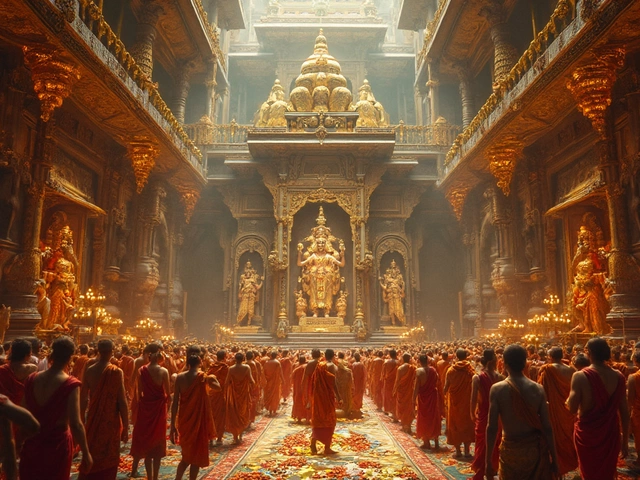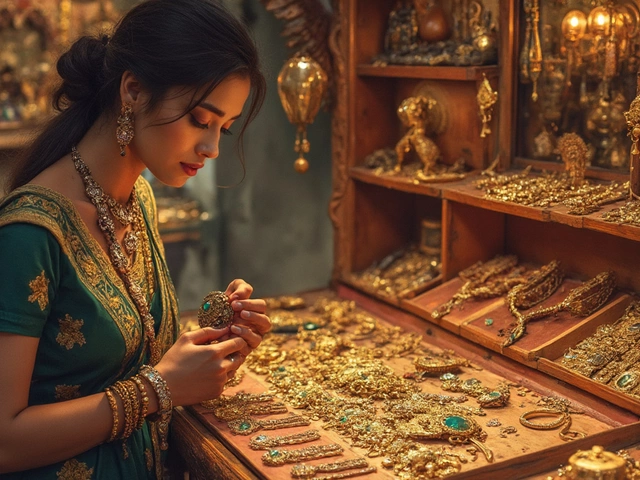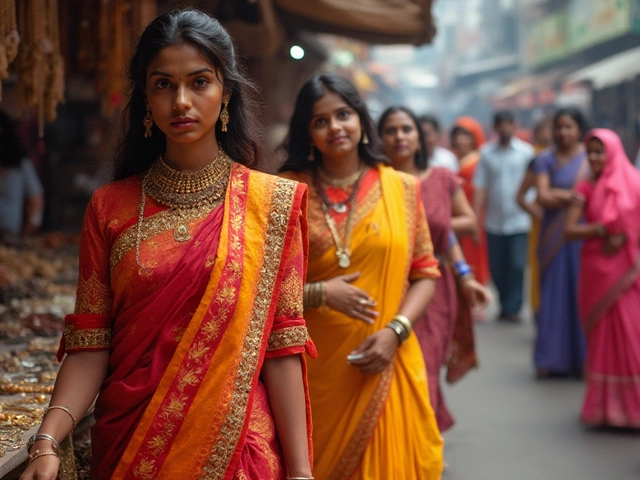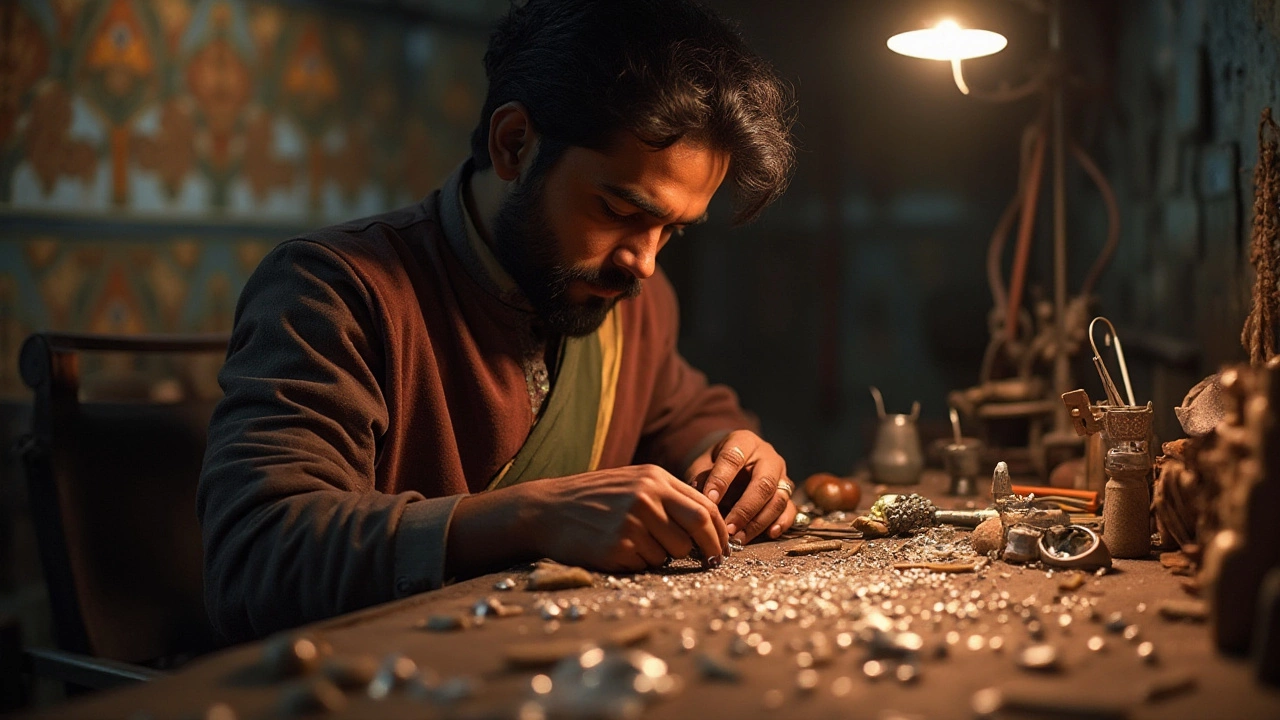
India has long been a dazzling player in the global diamond narrative. With a history intertwined with these precious stones, it's no surprise that the country holds a vital position in the world of diamond rings. But what makes India so special when it comes to diamonds?
From the historic tales of grandiose gems like the Koh-i-Noor to the bustling trade in places like Surat, India's deep-rooted association with diamonds is both captivating and complex. For jewelry enthusiasts and potential buyers, understanding India's unique diamond landscape offers insight into why this region continues to sparkle on the world stage.
This article aims to shed light on India's prowess in diamond crafting, exploring the diverse designs and the intricate artistry that beckons diamond admirers from all over the globe. We'll also equip you with tips on how to navigate the vibrant markets of India, ensuring you find a piece that truly resonates.
- India's Historical Role in the Diamond Industry
- The Art of Crafting Diamond Rings
- Popular Diamond Cuts and Designs in India
- Tips for Buying Diamonds in India
India's Historical Role in the Diamond Industry
India's association with diamonds stretches back to antiquity, with the earliest diamonds found along its riverbanks as early as the 4th century BC. These gemstones were not merely objects of adornment; they were revered, often considered instruments of divine power and good fortune. In ancient texts, diamonds were described as 'vajra,' which implies both thunderbolt and indestructibility in Sanskrit, highlighting their esteemed status in society. During these formative centuries, Indian diamonds became prized possessions among royal treasuries across the globe.
As India was the sole known source of diamonds for centuries, it became a central hub for diamond trade during the medieval period. Travelling explorers and traders, such as Marco Polo and Jean-Baptiste Tavernier, documented India's flourishing diamond markets and the opulence of its gemstone-rich cities. The Golconda mines in the Deccan Plateau were particularly renowned, famed for producing historic stones like the legendary Koh-i-Noor and the Hope Diamond. This period cemented India's status as a prominent player in the gemstone world, attracting the interest of European nobility eager to secure these treasures.
The art of diamond cutting and polishing originated in India, with artisans demonstrating unparalleled skill in enhancing these precious stones' natural beauty. The Mughal Empire in particular saw a fusion of local artistry and Persian influence, resulting in the creation of intricate jewels that adorned emperors and nobility. This legacy of craftsmanship continues to this day, where India remains a leader in the diamond cutting and polishing industry. According to a study by the Gems & Jewellery Export Promotion Council, India processes around 90% of the world's diamond output, a testament to its enduring skill and expertise.
Yet, the story of Indian diamonds isn't just about ancient history and lost mines; it is about resilience and adaptation. As primary sources like the Golconda mines were exhausted by the 18th century, the country pivoted to becoming a center for processing and trade. India's adaptation to these changing circumstances speaks volumes of its ability to remain relevant, honed by centuries of tradition and modern enterprise. This transformation is evident today in cities like Surat, known as the 'Diamond Capital of the World,' where innovative technology blends seamlessly with age-old techniques to maintain India's competitive edge.
The Global Influence
The influence of Indian diamonds extended far beyond its borders, shaping the jewelry industry across continents. Historically, India’s gems have adorned the crowns of European monarchs, reinforcing the cultural bridge between East and West. The trade routes established centuries ago laid the groundwork for today’s global gemstone markets. The ongoing demand for Indian jewelry highlights the enduring allure of these spectacular creations. As a result, India continues to be synonymous with diamonds, reinventing itself to meet the desires of contemporary consumers while retaining its rich heritage. As renowned jeweler Laurence Graff once said, "To own a diamond is to understand the beauty of the universe encased in this miraculous crystal from the Earth." The enduring legacy of India's role in the diamond narrative echoes this sentiment, a testament to the country's lasting impact on our fascination with these wondrous stones.
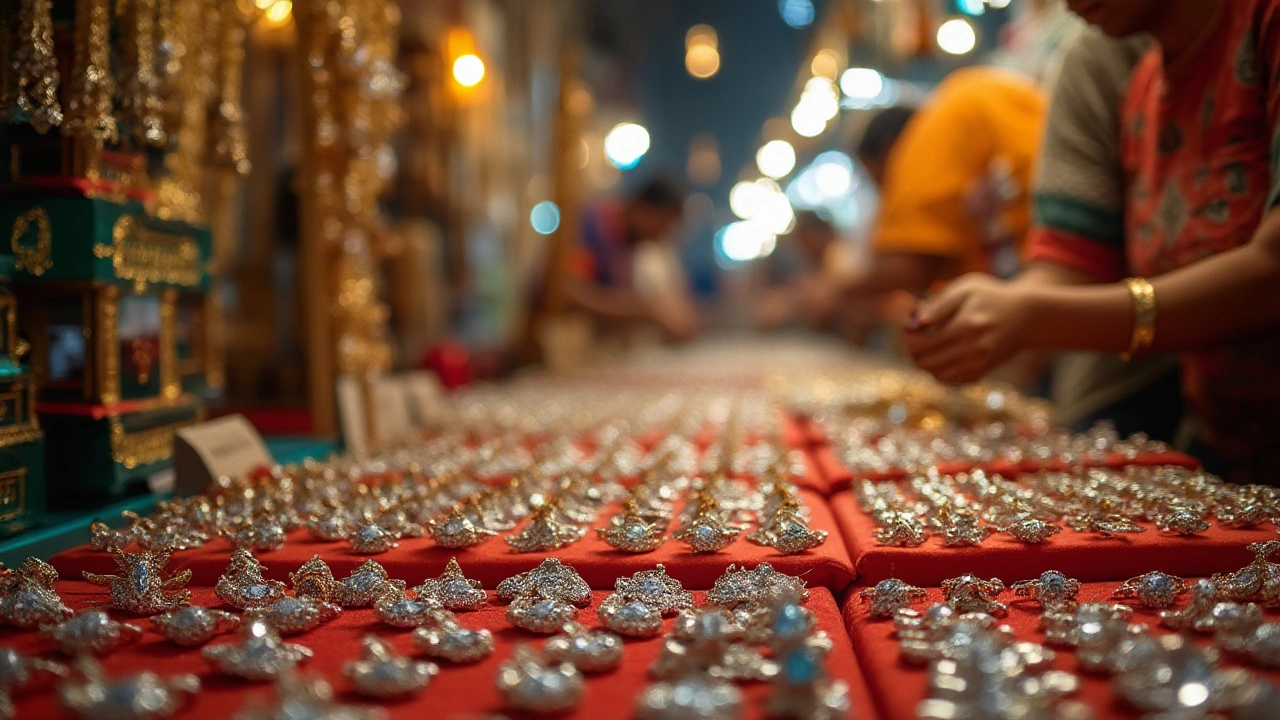
The Art of Crafting Diamond Rings
In India, the crafting of diamond rings is not merely a profession but an art form that has been honed over centuries. This artistry involves an intricate process that starts with sourcing raw diamonds and ends with the creation of luminous and alluring pieces that reflect the country’s rich cultural tapestry. The journey begins in regions like Gujarat, where skilled artisans in cities like Surat transform rough stones into stunningly cut diamonds. This involves not just the physical shaping of each stone but also a deep understanding of its unique characteristics such as cut, color, clarity, and carat weight.
Artisans employ both traditional methods and modern techniques in their work. While laser technology has made intricate designs more achievable, many artisans still rely on age-old, handcrafting skills passed down through generations. This blend of old and new ensures that each diamond ring is both timeless and contemporary, allowing it to appeal to a diverse range of tastes. The crafting process, though intensive, contributes significantly to India's status as one of the world's leading exporters of polished diamonds. A remarkable 90% of the world's diamonds are reported to pass through the hands of Indian artisans at some stage, highlighting the country's significance in the global diamond market.
"Each diamond tells a story, and the craftsmanship is what brings that story to life," shares Anil Maloo of Jaipur's renowned Gem Palace, reflecting the pride Indian artisans take in their work.
When examining the Indian jewelry industry, it’s clear that creativity knows no bounds. Designs range from traditional motifs inspired by nature and mythology to cutting-edge contemporary styles. One popular traditional design is the Jadau, a style that incorporates the meticulous setting of diamonds with gold filigree work. This technique, highly regarded for its intricacy and detail, is favored in various cultural celebrations across India. On the modern front, designers are experimenting with different metals such as rose gold, and unusual diamond shapes like marquise and oval, broadening the horizons for modern consumers.
The teamwork required to craft diamond rings is notable. Experts in gemology assess and certify stone quality, while designers conceptualize and create layouts that eventually manifest into precious pieces. Craftsmen meticulously assemble and polish each component, ensuring that the final result exhibits brilliance and appeal. It’s a community effort that combines passion, skill, and a deep cultural connection to the art of jewelry-making. The attention to detail and precision at every step of the process contributes to the unmatched quality and beauty of Indian diamond rings, sought after by jewelry connoisseurs worldwide.
Diamond cutting, a crucial component of crafting these rings, often determines the stone’s sparkle and radiance. The process demands an understanding of angles and facets, which is often likened to sculpting and architecture. Cutting techniques learned and perfected over decades ensure minimal wastage and maximum brilliance. Specific cuts like the princess, round brilliant, and cushion are particularly popular among Indian designers. Educational institutions across India, such as the Gemmological Institute of India, are dedicated to teaching the newest generations the art and science behind the perfect cut, ensuring the future of this craft.
For anyone interested in purchasing a diamond ring in India, understanding the craftsmanship behind it adds a layer of appreciation and value. When buyers are aware that each piece is the result of an artisan's love and skill, it transforms a mere purchase into the acquisition of a timeless artifact. In this way, Indian diamond rings not only adorn but also tell the stories of the myriad hands that brought them to life.
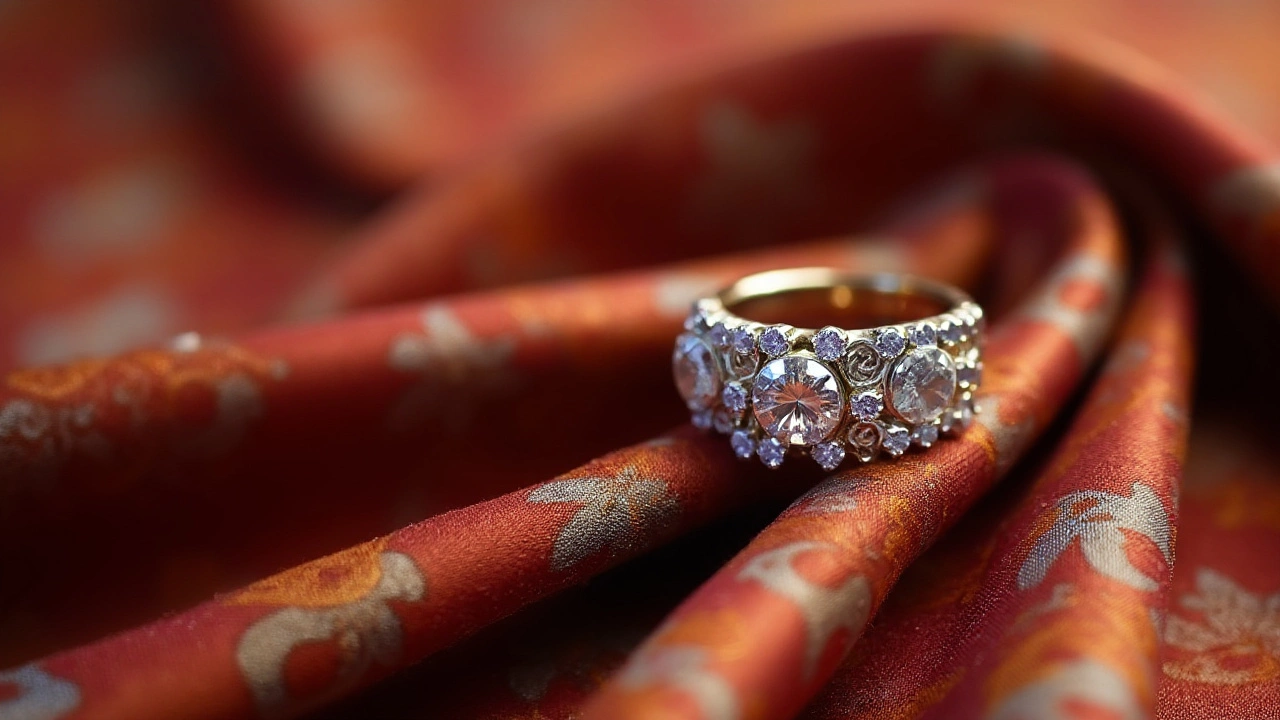
Popular Diamond Cuts and Designs in India
Walking through the bustling markets of India, one is immediately struck by the shimmering array of diamond rings showcasing an array of cuts and designs that capture both heritage and modern aesthetics. It's fascinating how the Indian market embraces these diversity-rich offerings, presenting a unique blend that pays homage to time-honored traditions while simultaneously embracing contemporary flair. The most favored cuts like the round brilliant and the princess cut are definitely popular; however, India prides itself on a myriad of styles that cater to varied tastes and preferences. An interesting note is the sawing method used in Surat, the world's largest diamond polishing center, which adapts to creating bespoke designs with remarkable precision.
The array of designs in the Indian market often draws inspiration from historical motifs and cultural symbolism. The classic charm of the pave and halo settings, interspersed with antique designs reminiscent of Mughal jewelry, present an eclectic mix that holds deep cultural significance. Indian jewelry often showcases intricate craftsmanship such as filigree work, adding another layer of beauty to these stones. Many couples are enchanted by the story each piece tells, making their choice deeply personal and meaningful. As an artisan from Mumbai once described, “Each diamond reflects more than just light; it reflects the hands and hearts of those who craft it.”
Let's delve into the more unique attributes of India diamonds. There’s the popular rose cut, which has often found favor in traditional Indian settings. With its less-is-more charm, it exudes an antique glamour that many find irresistible. It’s not uncommon for jewelers to incorporate rare cuts like the marquise and cushion as well, which offer a distinct vintage appeal yet complement modern designs. Customers have the liberty to indulge in customizing their purchases, either by selecting uniquely-cut stones or choosing from a plethora of metal settings such as platinum, white gold, or the ever-popular yellow gold.
The variety and richness of designs make diamond rings from India an appealing choice for those seeking unique craftsmanship. India’s influence on the diamond market is noteworthy, with its ability to provide high-quality diamonds while crafting magnificent designs that suit both lavish weddings and everyday aesthetics. High-quality craftsmanship, coupled with the emotional resonance of the jewelry, makes Indian diamonds a sought-after choice worldwide. This expertise is widely acknowledged, as reflected by the sheer volume of rough diamonds processed through the country, where nearly 90% of the world's diamonds are polished. Such figures say volumes about the craftsmanship found here.
For individuals interested in diamond investments, understanding the nuances behind each design’s cut allows for better valuation and appreciation. The straight lines of an emerald cut or the gentle curves of an oval cut can influence how the light plays with the diamond, ultimately impacting brightness and brilliance. Therefore, when considering a diamond ring from India, one embarks on a journey woven with rich culture and honed skill, offering not just adornment but an artisanal narrative that can be cherished for generations.
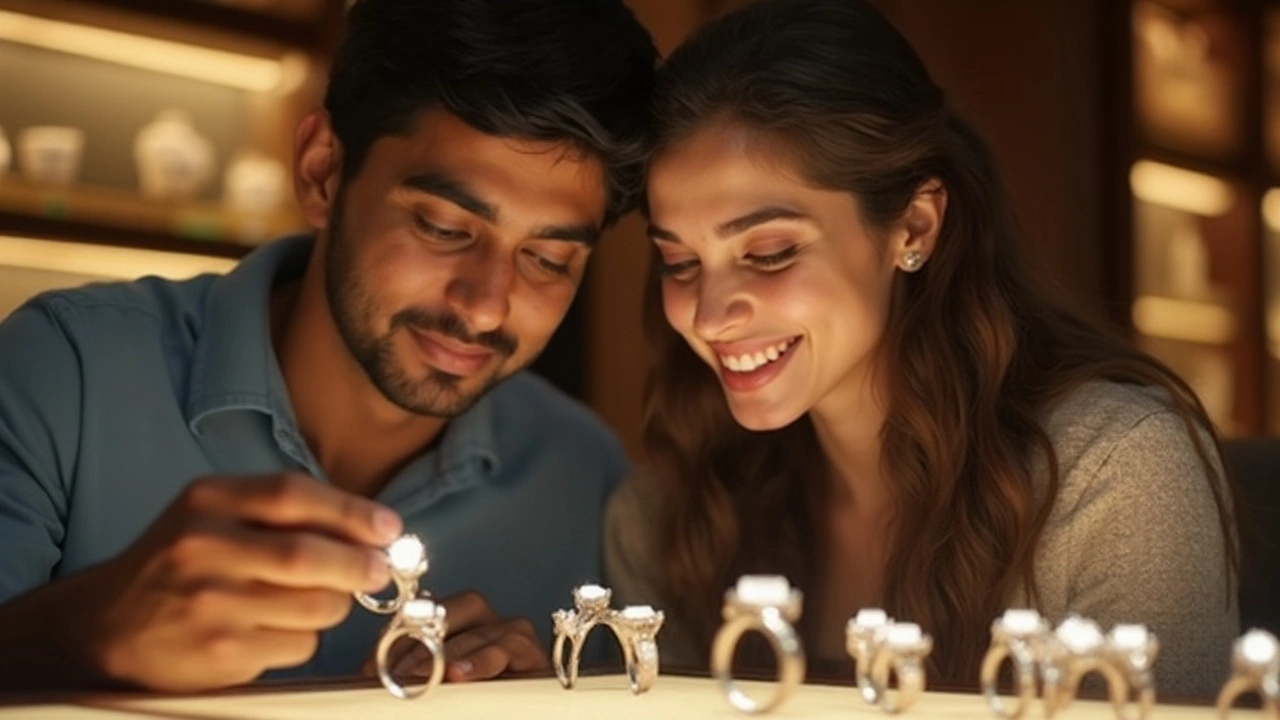
Tips for Buying Diamonds in India
When you're venturing into the Indian diamond market, it's like stepping into a realm where tradition meets modernity, where every piece tells a story of craftsmanship and cultural heritage. The first thing to keep in mind is the importance of knowing the 4Cs: carat, color, clarity, and cut. These are universal standards but hold special significance in India due to the region's reputation for cutting precision. Inspecting a diamond under proper lighting in India is crucial because many vendors operate out of family-run businesses where conditions can vary.
One can't forget the importance of certifications when purchasing diamonds. Always insist on a legitimate certificate from a recognized body like the GIA (Gemological Institute of America) or an equivalent. These certificates provide a detailed account of the stone’s quality and authentication, which is essential when purchasing from a bustling marketplace where quality varies. Many might find it surprising, but there's a significant emphasis on ethics in Indian markets too. Vendors in cities like Surat and Mumbai often adhere to strict guidelines to ensure diamonds are conflict-free, which is a reassuring element for conscientious buyers.
Engaging with local experts and jewelers is another wise strategy. Inquire about a jeweler's reputation; most established ones won't shy away from sharing their years of expertise. They can offer valuable insights considering traditional crafting techniques and modern trends in diamond rings. Speaking to previous customers or checking reviews can also provide confirmation of their credibility. Plus, discussions might uncover unique designs not prominently displayed, since many craftsmen take pride in a custom, personalized approach.
"Diamonds from India are not just renowned for their quality; they reflect centuries of cultural artisanry," said Rajiv Sharma, a jeweler with over 30 years of experience in Mumbai's Zaveri Bazaar.
One essential tip for buyers is to negotiate wisely. In an Indian market, negotiation is almost a cultural experience. Prices are frequently quoted above what's expected, allowing room for bargaining. However, it's all about striking a fair deal without undervaluing the labor-intensive craft. Some buyers find it effective to employ local guides who understand the intricacies of these markets, ensuring no aspect is overlooked. Also, be on the lookout for the newest arrivals by following economic trends; sometimes, economic factors can sway prices significantly.
Lastly, consider shipping logistics if you're purchasing with the intention of sending the diamond overseas. India has shown improvements in exports with services providing insurance and tracking. Nevertheless, verify these details thoroughly to prevent misconceptions about shipping times and costs. Making a checklist of these elements before diving into purchasing can save considerable hassle and allow you to enjoy the experience, walking away with a piece of history and art akin to the sparkle of India’s rich land.
